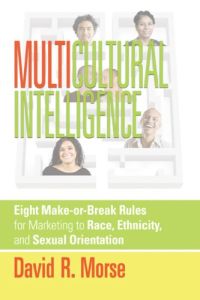
Multicultural Intelligence
Eight Make-or-Break Rules for Marketing to Race, Ethnicity, and Sexual Orientation
Recommendation
The United States is made up of people who cherish their unique histories and identities as members of distinct ethnic groups, religions, cultures and communities. This poses a challenge to marketers. How do you get your message across to so many different kinds of people, some of whom don’t even speak your language? David R. Morse, an expert in multicultural marketing, examines America’s major population segments: Hispanics, African-Americans, Asian-Americans, and members of the lesbian, gay, bisexual and transgender (LGBT) community. He points out how these market segments differ from the mainstream, explains variations within individual segments, and highlights their shopping patterns, demographics and product preferences. Then he lists eight rules for marketing to these audiences. getAbstract considers this book a must-read for marketers and anyone who wants to understand how color, ethnicity and sexual preference influence buying behavior.
Summary
About the Author
David R. Morse is president and CEO of a company that specializes in multicultural marketing. He writes and speaks frequently on this subject.








Comment on this summary